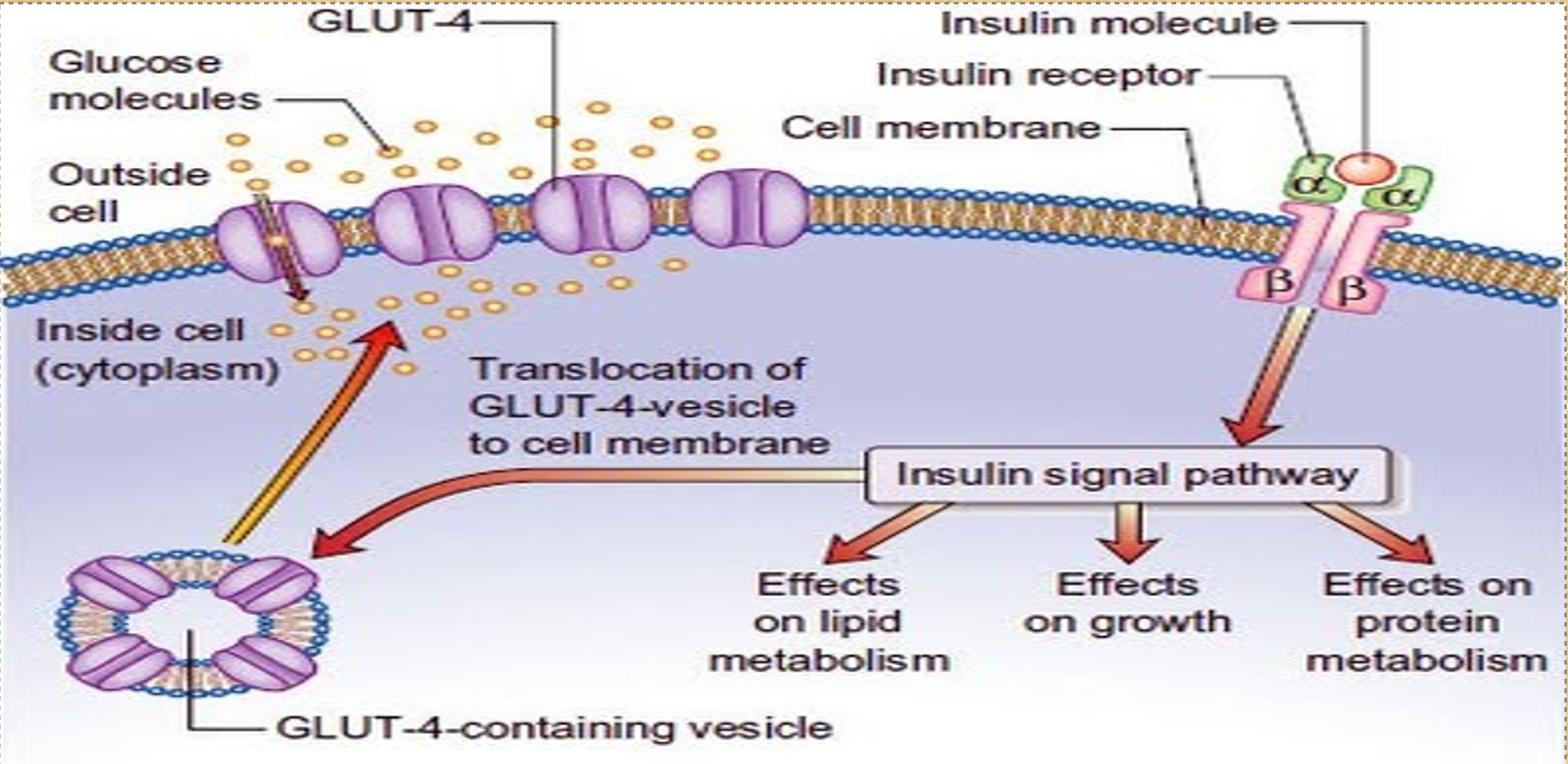Overview of Metabolism
Introduction to Metabolism
energy metabolism- the way the body stores & utilizes energy
influenced by 4 things
eating patterns
growth
stress
metabolic rate
endocrine signals control whether the body stores or uses energy
hormones have coordinated regulation of metabolic pathways to maintain adequate energy supplies for all body cells
Two Critical Concepts Driving the Control of Energy Metabolism
The body has to store nutrients during intake periods & break down these stores between intake periods because food intake is intermittent
Blood glucose levels need to be maintained at all times because the brain depends on glucose as its main energy source
Energy Balance
Energy input- sourced from carbs, fat, protein
energy output in six forms:
mechanical work
muscle contraction
movement of cells, organelles, & appendages
synthetic reactions
fuel storage
tissue building
creation of essential functional molecules
membrane transport
minerals
organic anions/cations
amino acids
signal generation/conduction
electrical
chemical
mechanical
heat production
temperature regulation
inefficient chemical reactions
detoxification & degradation
urea formation
conjugation
oxidation
reduction
Main formulas
input + production = utilization + output
energy input = energy utilization + energy output
energy input = work performed + heat released (energy output)
endocrine system is responsible for making sure that a steady supply of small nutrients is always available to cells for their energy demands
replenishes the supply in 2 main ways
absorption of more nutrients into the bloodstream
mobilization of energy stores
Body Composition of an Average Human
by body weight
65% water & minerals
20% fat
14% protein
half is fixed- can’t be used for energy because it’s used a structure for organs/tissues
half is mobilizable- can be used for energy
0.6% carbohydrates
in caloric stores
76% fat
23% protein
1% carbohydrates
Fuel Metabolism
important organ/tissue contributors
liver
adipose tissue
muscle
blood glucose level- should be between 90-120 mg/dL
important to maintain for brain, nervous tissue, & RBCs
metabolic processes
glycogenesis- formation of glycogen from glucose
glycogenolysis- breakdown of glycogen to make glucose
gluconeogenesis- formation of glucose from other compounds like fatty acids or proteins
lipogenesis- formation of lipids from FFAs (free fatty acids)
lipolysis- breakdown of lipids to FFAs
protein synthesis- synthesis of proteins from amino acids
proteolysis- breakdown of protein to amino acids
Metabolic States
absorptive/fed state- period immediately after eating when nutrients absorbed through intestinal wall into the circulatory & lymphatic systems (about 4 hours after each meal)
focused on energy storage
glycogenesis occurs
increased lipogenesis, & protein synthesis
decreased gluconeogenesis & lipolysis
insulin high
postabsorptive/fasting state- period after the absorptive state has finished where blood glucose levels are maintained by converting other molecules to glucose
usually in late morning, afternoon, and night if person is eating on a regular 3-meal schedule
lower blood glucose and glucose production
insulin low
hepatic glycogenolysis & gluconeogenesis
muscle glycogenolysis
blood glucose maintained by liver
important for uptake/utilization in non-insulin sensitive tissues (brain & central nervous system)
Regulation of Absorptive and Post-Absorptive Metabolism
metabolic changes in the transition between absorptive & postabsorptive states triggered by endocrine signals
4 important hormones
insulin
made by beta cells in pancreas
associated with energy storage
glucagon
made by alpha cells in pancreas
associated with maintaining blood glucose levels
epinephrine
made in adrenal medulla
associated with maintaining blood glucose levels
cortisol
made in adrenal cortex
associated with maintaining blood glucose levels
mechanism of hormone action
hormones bind to receptors that trigger a cascade that brings about the final response
receptors are large proteins specific to hormones
protein hormones receptors in PM
steroid hormone receptors in cytoplasm
thyroid hormone receptors in nucleus
receptor number at target tissue determines the response of the target cell to a hormone
Anatomy of Pancreas
only 1-2 % of pancreas is actually used for endocrine functions
rest is used for producing digestive enzymes

Actions of Insulin
insulin lowers blood glucose
increases glucose uptake by activating the GLUT4 Transporter
increases glycogenesis
decreases glycogenolysis
lowers blood amino acids
increased amino acid uptake
increased protein synthesis
lowers blood free fatty acids
increased FFA uptake & lipogenesis
inhibit lipase activity
mechanism of action for insulin
insulin molecule binds to receptor in the cell membrane
activates insulin signal pathway
a vesicle containing the GLUT4 transporter is sent to the PM
once the vesicle is fused with the PM, glucose is transported inside the cell
insulin secretion increases as blood glucose increases & vice versa

Glucagon
secreted by alpha cells of pancreas
major actions- increase glycogenolysis, gluconeogenesis, lipolysis
primary regulation of release- decreased blood glucose
Adrenal Gland
cortex is 80-90%
androgens (50% of androgens in women) made in reticularis
cortisol made in fasiculata
aldosterone made in glomerulosa
medulla is 10-20%
catecholamines (norepinephrine & epinephrine) are made here

Cortisol
Regulation of Cortisol Secretion
stress, hypoglycemia, or morning time positively regulates the release of **corticotropin releasing hormone (CRH) **from the hypothalamus
nighttime negatively regulates the release of corticotropin
CRH from the hypothalamus causes the pituitary gland to release adrenocorticotropin hormone (ACTH)
ACTH stimulates the adrenal glands to produce cortisol

Actions of Cortisol
primary effects all meant to maintain blood glucose levels
primary effects are
mobilizing amino acids from protein in muscle
stimulating hepatic gluconeogenesis
facilitate lipolysis by epinephrine
anti-insulin effect on muscle & adipose tissue
opposes glucose uptake
 Knowt
Knowt
